The suddenness of Karachi’s sewers
Dread suddenness in Karachi―in the shape of shocks that keep us in a permanent state of stress.
Consider these examples by degree: Heading to North Karachi, I will suddenly find myself frightened and lost in the thickets of an unfamiliar neighborhood because I unknowingly took the wrong exit off a sudden new flyover.
Passing through PECHS, I am momentarily disoriented because the brain registered what the corner of the eye barely caught: a sudden gaping space where something once stood, like the saddle in the gum where a tooth once sat. I realize that gaping hole is the plot of yet another Art Deco property that has been torn down to make way for middle-class apartments. Our vintage neighborhoods have come to resemble sinister gummy grins that form when tooth after tooth has been extracted or fallen out from decay or disease.

Suddenness in smarter cities is wielded as an instrument of marvel. I’ve turned a corner in Madrid, Seoul, London, Paris, Singapore, to come upon a sudden sight of breathtaking wonder, a giant bronze frog, a dancing fountain to delight children, a space cleverly sculpted for pedestrian pleasure. In Karachi you will turn a corner and encounter something that takes your breath away―a tree stump, a neoliberal prescription to feel fuzzy about Karachi, the ruins of a heritage building―but it feels more like that microsecond when your breathing is stoppered after a long hoarse scream.
I dwell on suddenness because I suspect it is what emerged from how this summer’s monsoon terror changed us under our skins.
A giant hole had appeared in front of CM House. The road had just suddenly caved in. From the distance the neat black cut-out circle looked like an optical illusion or an anti-mirage, a flattened 2D image in a 3D-scape
In July, I was driving to work via Dr Ziauddin Ahmed Road that takes me to the Sheraton-PIDC signal. I started to feel dismay as the traffic was stuck mid-way in what is usually a fast-flowing artery. They were diverting us left onto Brunton Road at the State Life building. As my car crawled forward, I craned my neck right to see why the road had been closed: A giant hole had appeared in front of CM House. The road had just suddenly caved in. From the distance the neat black cut-out circle looked like an optical illusion or an anti-mirage, a flattened 2D image in a 3D-scape.

That image stayed with me as we battled the monsoon’s unexpected mood through August. What if I had been in that spot at the signal when the road collapsed? How can we tolerate a chunk of the road suddenly sinking? How can we ever drive again knowing we could be sucked into the bowels of the earth in a hot second? Terror is the paralysis of knowing that as we lurch from moment to moment in this life, we do so absolutely blind to what could happen next. Anything could suddenly happen in Karachi, just like that cloudburst at the beginning of August that left so many people helpless and stranded across the city.
I reckon, however, that the antidote to these anxieties is knowingness. And so, when the water drained, and I began the forgetting of the monsoon’s trauma, my fear gave way to anger. I would not countenance roads caving in. Why did this happen? How widespread was it? Was anything being done? My journalistic anger led me to the door of Ayoob Shaikh, who was until recently running Karachi’s water and sewerage board, and is known as one of the most knowledgeable of engineers the institution has ever had.

Ayoob Shaikh confirmed that indeed, it was a phenomenon and they had fixed 200 such craters since the rains (see list below).
“The major problem which we are facing, mainly in district South or the Old City area where the system is really old, is the corrosion of the concrete of the pipe,” he explained.
These sewage pipelines carry whatever is flushed from your toilet. This is sewerage that has biomass or sludge. When KW&SB engineers design our pipes, they see to it that the maximum flow of sewerage will be 80% of the diameter so the top of the pipe always stays empty. They don’t want the pipe to be full.

“The pipelines are designed for self-cleansing velocities,” he said. “So the sludge should normally not settle but keep moving through the pipe. It should head to the pumping station and eventually to the treatment site. But because our pumping stations aren’t working properly or malfunction, there is less flow in the pipes.”
The biomass thus starts settling in them. It then starts decaying, decomposing and degenerating, and gases are let off. The gases come in contact with the top of the pipeline, called the crown, which is a moist place. So the sulfur gas meets the moisture and turns into sulphuric acid, the Nitrous oxide gas from the sludge produces nitric acid. “These acids cling to the internal surface of the pipeline and really weaken it,” he added.
Additionally, when it rains, the (water’s) surcharge load on the road surface, or the earth cover on top of the pipeline, becomes saturated and heavy. This weight bears down on the already weak crown of the pipeline. That is when it caves in. “Once you see a collapse, we see it is good for the whole stretch of the sewer and it means it has outlived its lifetime,” Shaikh said. These pipes were supposed to last 35 years but they are collapsing before their time.
In Karachi’s Old City areas they used to have a way of dealing with the acid buildup, by the way. There were shafts for gas release. But as highrises developed people started removing the vent shafts because they said they smelled. Little did they know that they were destroying a defense system that kept their sewers in good shape.
In Karachi’s Old City areas they used to have a way of dealing with the acid buildup: vent shafts
Aftab Chandio, the chief engineer of sewerage, oversaw the work to replace the collapsed part outside CM House with 300 feet of a new 72-inch pipeline. “It was almost 25 feet deep,” he explained. “We worked 24 hours for four days.” It’s a 1960s system, he said, what do you expect?
I expect that the people in charge of this city will do what they can to prevent and preempt giant holes from opening up in the ground beneath our feet. Are we not already becoming progressively psychically scarred from the city-wide infrastructure destruction wrought by each monsoon deluge? I quote from Camille Paglia: “Civilized man conceals from himself the extent of his subordination to nature. The grandeur of culture, the consolation of religion absorb his attention and win his faith. But let nature shrug, and all is in ruin. Fire, flood, lightning… Civilized life requires a state of illusion.”
We have mostly been able to suspend our hearts and minds to continue to bear living in Karachi. We grew used to the terror of the target killing, a summer of sky-high homicide rates. That was supplanted by the terror of life-snatching Covid, as we dystopically stood at distances in front of biers at funerals we feared would herald our own. This year, the climate crisis visited upon us a terror of national proportions. I used to dread the suddenness of the demise of bad romances, the emotional autopsies and bitter unfinished goodbyes. How pitiful those tiny terrors of abandonment were. Today I fear the suddenness of sinking sewers.
This is the list of 148 sewer collapses that KW&SB fixed:
| District Central | Area | Sewer diameter |
|---|---|---|
| Near Shafiq Morr, Sector 16-A, Gulshan-e-Waseem | N. Nazimabad | 18 |
| near Comprehensive School, Block M | N. Nazimabad | 15 |
| Near Babul Islam masjid, Aurangabad | N. Nazimabad | 15 |
| Taj Baba Market, Khilafat Chowk, Paposh | N. Nazimabad | 15 |
| Near Aga Khan Jamaat Khana, Block C | N. Nazimabad | 15 |
| Near Diabetic Charitable Hospital, 5-E, Nazimabad | N. Nazimabad | 15 |
| Near Church Christian Colony, Pahar Gunj Colony | N. Nazimabad | 12 |
| Near Baboo Siraj Pakwan House 5-E Nazimabad | N. Nazimabad | 12 |
| Behind Makki masjid 5-E Nazimabad | N. Nazimabad | 12 |
| House No A-597 Block I North Nazimabad | N. Nazimabad | 15 |
| Near Bashir Chowk, New Karachi | New Karachi | 36 |
| in front of Noor-un-Nisa Eye Hospital Sector 5-B, New Karachi | New Karachi | 24 |
| at Sindhi hotel towards D Morr, 7,000 road, New Karachi | New Karachi | 24 |
| Rehmania masjid, Sector 11-G, New Karachi | New Karachi | 15 |
| Block-91, near Lal Masjid, Sector 5-G | New Karachi | 15 |
| in front of Bilal Colony police station, New Karachi | New Karachi | 18 |
| Block 1, 2 Nizami Dawakhana, Sector 5-F, New Karachi | New Karachi | 18 |
| in front of Block 108, Sector 5-D, New Karachi | New Karachi | 12 |
| Block 117 Sector 5-D New Karachi | New Karachi | 12 |
| In Sector 11C New Karachi | New Karachi | 12 |
| in Sector 10 North Karachi | New Karachi | 24 |
| at Umer bin Khattab Sector 8, North Karachi | New Karachi | 12 |
| at Madina Colony stop, New Karachi | New Karachi | 24 |
| in Sector 5G New Karachi | New Karachi | 18 |
| in Sector 5E New Karachi | New Karachi | 24 |
| in front of Nirala Sweets, C-1, Liaquatabad | Liaquatabad | 36 |
| in front of Block 5, Rangers Gym | Liaquatabad | 18 |
| in front of Nazimabad Electronic, Nazimabad police station Block 4 | Liaquatabad | 36 |
| in front of Mehboob Star Lawn, Nazimabad Block 4 | Liaquatabad | 36 |
| Masjid-e-Inaaf C-Area | Liaquatabad | 15 |
| Oranagabad near PSO Pump, Nazimabad Block 1 | Liaquatabad | 15 |
| near Muhammad Masjid, B-Area | Liaquatabad | 12 |
| B-1 Area near Usman Decoration | Liaquatabad | 12 |
| in front of House No 4A-4/9, Nazimabad Block 4 | Liaquatabad | 48 |
| Nazimabad No 4 | Liaquatabad | 24 |
| Karimabad | Gulberg | 24 |
| Near Dream Heaven Marriage Hall Blocks 4& 6 | Gulberg | 24 |
| Near C-4, Block 4 | Gulberg | 24 |
| Near Block 4, 6, dividing road, Shahrah-e-Pakistan | Gulberg | 24 |
| Near Bana Palace, Block 6 | Gulberg | 24 |
| District East | ||
| near Aramish Bungalows Block 19 | Gulistan-e-Johar | 36 |
| near Classic View Apts Block 19 Scheme 36 | Gulistan-e-Johar | 24 |
| near Makkah masjid Block 3, Scheme 36 | Gulistan-e-Johar | 18 |
| at C-162 to C-170 Block 14, Scheme 36 | Gulistan-e-Johar | 15 |
| opposite Continental Bakery Block 1, Scheme 36 | Gulistan-e-Johar | 12 |
| near Soneri Apts Block 13, Scheme 36 | Gulistan-e-Johar | 48 |
| at Sindhbad Amusement Park, Block 13, Scheme 36 | Gulistan-e-Johar | 36 |
| PIA Society Gate 1, Block 9 | Gulistan-e-Johar | 24 |
| near Qwais Qurni Masjid Block 19, Scheme 36 | Gulistan-e-Johar | 36 |
| at Abdullah Heights, Block 16, near UBL | Gulistan-e-Johar | 18 |
| near Afnan Arcade Block 15, Scheme 36 | Gulistan-e-Johar | 18 |
| at Bibi Amna Park | Gulistan-e-Johar | 15 |
| at Decent Homes, Block 15, near Allied Bank | Gulistan-e-Johar | 12 |
| Teen Hatti, PIB Colony | Gulshan-e-Iqbal | 30 |
| Ghousia Colony, Jail Wall | Gulshan-e-Iqbal | 15 |
| Adamjeenagar Block 12 | Gulshan-e-Iqbal | 24 |
| Sumairi kitchen, Zubaida Hospital | Gulshan-e-Iqbal | 18 |
| Ameer Khusro Road, Kamal Park | Gulshan-e-Iqbal | 18 |
| Sibtain Imambargah, Block 1 | Gulshan-e-Iqbal | 18 |
| Jamali House, Happy Home School, Block 13-D/1 | Gulshan-e-Iqbal | 18 |
| Jhanda Chowk Block 13 | Gulshan-e-Iqbal | 15 |
| Basera Chowk Block 2 | Gulshan-e-Iqbal | 12 |
| Yousaf Burger Dhoraji | Gulshan-e-Iqbal | 18 |
| Mehran Bakery, Block 13D-1 | Gulshan-e-Iqbal | 12 |
| Noman Complex Block 13-D-3 | Gulshan-e-Iqbal | 18 |
| Askari Park, old Sabzi Mandi, UC 20 | Gulshan-e-Iqbal | 24 |
| Jail Chowrangi | Gulshan-e-Iqbal | 18 |
| Football Ground Block 7 | Gulshan-e-Iqbal | 12 |
| Urdu Science College Gulshan-e-Iqbal | Gulshan-e-Iqbal | 12 |
| Gulshan-e-Ayesha Block 3 | Gulshan-e-Iqbal | 30 |
| Jail chowrangi, under the ramp | Gulshan-e-Iqbal | 36 |
| A/152 Block 3 | Gulshan-e-Iqbal | 12 |
| PIB Colony | Gulshan-e-Iqbal | 36 |
| Gulshan-e-Maymar | Scheme 33 | 30 |
| Paradise Bakery Road | Scheme 33 | 54 |
| Bengali Goth near Bengali Morr, UC 31 | Scheme 33 | 24 |
| near Javed Park UC 28, Scheme 33 | Scheme 33 | 18 |
| Near PCSIR Lab Scheme 33 | Scheme 33 | 24 |
| Khattak Hotel, Bilawal Shah Noorani, Suparco Road | Scheme 33 | 24 |
| Main Gate TP-II Mehmoodabad | Jamshed Qtrs | 42 |
| at the back of Pump House | Jamshed Qtrs | 42 |
| Sindhi Muslim Block A | Jamshed Qtrs | 18 |
| Manzoor Colony UC 02 | Jamshed Qtrs | 24 |
| Block 8 Sindhi Muslim | Jamshed Qtrs | 15 |
| in front of Nasla Tower | Jamshed Qtrs | 36 |
| Tipu Sultan Road | Jamshed Qtrs | 24 |
| Gurumandir | Jamshed Qtrs | 15 |
| District South | ||
| Oppsite CM House | Clifton | 72 |
| Movenpick and PIDC | Clifton | 72 |
| Artillery Maidan police station | Clifton | 36 |
| at Gizri | Clifton | 36 |
| Ch. Khaliquzzaman Road | Clifton | 36 |
| Hotel Metropole | Clifton | 24 |
| Clifton Block 2 | Clifton | 18 |
| near Bilal Masjid Clifton Block 2 | Clifton | 15 |
| Hijrat Colony | Clifton | 18 |
| Baba-e-Urdu Road | Clifton | 24 |
| Jinnah Bridge, Lucky Star | Saddar | 24 |
| in front of Services Mess | Saddar | 15 |
| District West | ||
| Sector 7B | Gadap | 18 |
| Sector 7A | Gadap | 12 |
| Sector 5D | Gadap | 12 |
| Sector 4A | Gadap | 12 |
| Sector 4B | Gadap | 12 |
| Chandni Chowk | Orangi | 12 |
| Data Clinic, Ghaziabad Road | Orangi | 15 |
| Amjad Thalia, Gulshan-e-Zia | Orangi | 15 |
| Orangi No 4 | Orangi | 12 |
| Orangi No 4.5 | Orangi | 12 |
| Galli No 4, Sector 11-E | Orangi | 8 |
| District Keamari | ||
| at Madina Colony Timber Market | Baldia | 18 |
| Iqbal Road, Baldia | Baldia | 18 |
| Pak Car Wash, Sultanabad | Keamari | 18 |
| Block 6, Musharraf Colony | Keamari | 24 |
| Jinnah Road, Shershah | Keamari | 24 |
| District Korangi | ||
| in front of plot No. 8&9 Sector 15, KIA | Korangi | 54 |
| in front of furniture market Sector 35C, UC 29 | Korangi | 18 |
| near National Savings Centre, 15000 Road, UC 18 | Landhi | 24 |
| near Rehmania Mosque UC 16 | Landhi | 12 |
| near Jamia Mosque, Usmania, UC 23 | Landhi | 12 |
| near Jubilee snacks, 12000 Road | Landhi | 24 |
| in front of Raza Chowk, UC 9 Block 4 | Landhi | 36 |
| in front of Colony Gate flyover near The Educator, UC 10 | Shah Faisal | 18 |
| near Muhammadi Masjid Block 5 | Shah Faisal | 15 |
| in front of UC office Block 5 | Shah Faisal | 15 |
| in front of Moinabad Wedding Hall, UC 01 | Model Zone | 24 |
| at Khokhrapar Daak khana UC 4 | Model Zone | |
| at Shan-e-Mughlia near Amin Majsid UC 6, Model Colony | Model Zone | 24 |
| at Telephone Exchange, Model Colony | Model Zone | 24 |
| at Amin Masjid to UC 6, Gol Ground, Model Colony | Model Zone | 24 |
| at KDA Morr to Shaheed Chowk Khokhrapar | Model Zone | 24 |
| at KDA Morr Daak Khana Khokhrapar | Model Zone | 24 |
| at Saudi Colony Madina Colony, Khokhrapar | Model Zone | 8 |
| District Malir | ||
| at Jalbani Goth UC 12 | Malir Town | 36 |
| at Sukhio Goth UC 12 | Malir Town | 36 |
| at Bacho Bakery Khokhrapar No 4 | Malir Town | 18 |
| Jalbani Goth, UC 12 | Malir Town | 36 |
| near Got Hospital new Muzaffarabad UC 4, Majeed Colony | Bin Qasim Town | 18 |
| at Bengali Para UC 1, Dawood Chowrangi | Bin Qasim Town | 15 |
| near Ayesha Masjid, Zafar Town, UC 7, Quaidabad | Bin Qasim Town | 15 |
| at Gulshan Society UC 7 Quaidabad | Bin Qasim Town | 24 |


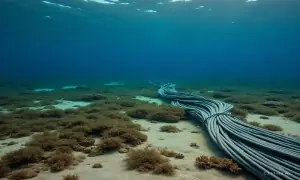




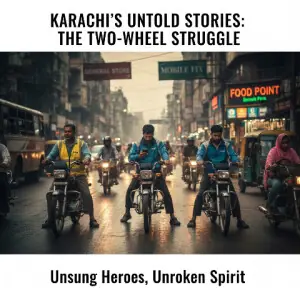



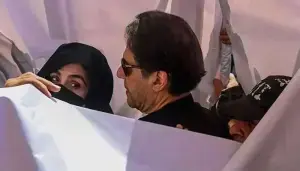


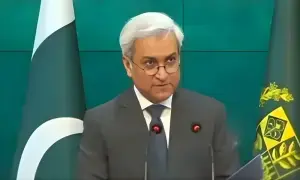

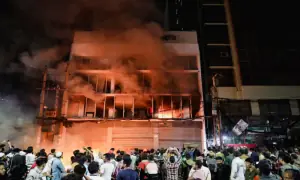



Comments are closed on this story.